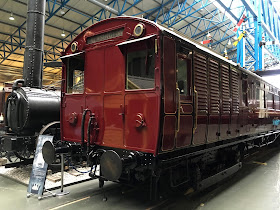 |
| D5343 (26 043) at Duffield |
| Information | |
|---|---|
| Number built: | 47 |
| Built: | 1958-59 |
| Builder: | Birmingham Railway Carriage & Wagon Company |
| Engine: | Sulzer 6LDA28-A diesel |
| Power: | 1, 160 hp (865 kW) |
| Wheel arrangement: | Bo-Bo |
Twenty locomotives were ordered from the BRCW in the Type B power classification (later Type 2). The Class 26 shared some visual design guidance (Wilkes & Ashmore) with the Brush Type 2 (Class 30, later 31) [1] though had an improved power/weight ratio and hence was able to use a Bo-Bo not A1A-A1A wheel arrangement [2].
Following the success of the pilot-scheme batch a further twenty seven were built before the design was power uprated to form the Class 27. Initially the Class 26 was allocated to Eastern Region for London suburban services [3] though later were reallocated to Scotland where they spent the majority of their careers. The pilot-scheme locomotives became the Class 26/0 under TOPS with the later batch 26/1. There were a number of detail differences between the two sub-classes though some of these differences were removed during refurbishments [4].
The Class 26 remained in service working mostly on freight traffic in Scotland, including Merry-Go Round coal traffic, seven locomotives being fitted with slow speed control [5]. Their numbers were gradually reduced in the late 1980s and early 90s with the last examples withdrawn by 1994, being surplus to requirements. Thirteen have been preserved.
 |
| D5343 runs around its train at Duffield |
 |
| D5343 at Wirksworth |
 |
| Another view of D5343 at Duffield |
[1] David Lawrence, British Rail Design 1948-97 (Ian Allan, 2016) p. 128
[2] Brian Haresnape, Early Prototype and Pilot-Scheme Diesel-Electrics (Ian Allan, 1981) p. 56
[3] Colin Alexander, The British Railways Pilot Scheme Locomotives (Amberley, 2017) p. 49
[4] Colin J Marsden, Motive Power Recognition 1: Locomotives (Ian Allan, 1988) p. 33
[5] Alexander p. 55









